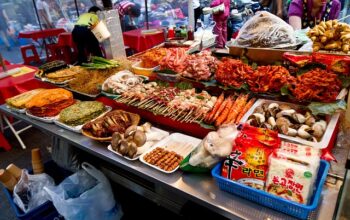Local food delivery and meal preparation services are crucial in addressing growing concerns around food allergies and intolerances, offering convenient solutions for individuals with diverse dietary needs. These platforms cater to specific requirements through customized meals, ensuring safety by implementing robust systems for allergen identification, clear communication, and cross-contamination prevention. By providing detailed dietary information, customizable menus, and filters, these services revolutionize dining experiences, fostering trust and enhancing the overall well-being of customers with allergies or intolerances.
In today’s diverse culinary landscape, understanding food allergies and intolerance is paramount. This comprehensive guide delves into the complex world of these dietary restrictions, exploring their causes, symptoms, and impact on daily life. We examine the pivotal role of local food delivery services in accommodating special needs, highlighting tailored meal preparation methods that cater to individual requirements. Effective communication strategies for allergy information with delivery platforms are also discussed, alongside best practices for safe food prep and delivery. Finally, we offer insights for restaurants and delivery apps to foster an inclusive dining experience.
- Understanding Food Allergies and Intolerance: A Comprehensive Guide
- The Role of Local Food Delivery Services in Accommodating Special Dietary Needs
- Customized Meal Preparation: Tailoring Meals to Meet Individual Requirements
- Communicating Allergy Information Effectively with Delivery Platforms
- Ensuring Safety: Best Practices for Food Prep and Delivery
- Building an Inclusive Dining Experience: Tips for Restaurants and Delivery Apps
Understanding Food Allergies and Intolerance: A Comprehensive Guide

Food allergies and intolerance are becoming increasingly recognised issues in modern society, impacting individuals’ daily lives significantly. Understanding these conditions is paramount, especially with the rise of local food delivery and meal preparation services. These services play a pivotal role in catering to diverse dietary needs, but they must also ensure safety and accuracy in every dish prepared.
A food allergy is an abnormal immune system response to specific proteins in food, while intolerance refers to difficulty digesting certain foods due to lack of enzymes or other digestive issues. Both can cause severe reactions, from discomfort to life-threatening anaphylaxis. Recognising trigger foods and managing them effectively is crucial for those affected. Local delivery platforms and meal prep companies must implement robust systems to identify and communicate potential allergens on menus, ensuring transparency for customers with allergies or intolerances.
The Role of Local Food Delivery Services in Accommodating Special Dietary Needs

Local food delivery services play a pivotal role in accommodating special dietary needs, especially for individuals with food allergies or intolerances. These platforms offer a convenient solution by providing access to a wide range of meals prepared according to specific dietary requirements. With just a few clicks, users can order from various restaurants and catering services that specialize in creating safe and delicious meals tailored to their needs.
Meal preparation is a key aspect where local food delivery excels. Many providers offer customization options, allowing customers to specify allergies or ingredients to avoid. This ensures that the prepared meals are free from potential triggers, providing peace of mind for those with special dietary constraints. Moreover, these services often partner with chefs and catering companies dedicated to understanding and adhering to specific dietary guidelines, ensuring a consistent and reliable experience for customers with unique nutritional requirements.
Customized Meal Preparation: Tailoring Meals to Meet Individual Requirements

In today’s diverse culinary landscape, many restaurants and catering services are stepping up to accommodate customers with food allergies and intolerances by offering customized meal preparation. This tailored approach ensures that each dish is designed to meet specific dietary needs, be it eliminating common allergens or adjusting ingredient ratios for those with sensitivities. Local food delivery and meal preparation services play a significant role in this trend, as they provide convenient options for individuals who prefer home-cooked meals without the hassle of cooking themselves.
By offering customized meals, these services not only cater to customers’ health requirements but also enhance their overall dining experience. This means that those with dietary restrictions can still enjoy a wide array of flavors and cuisines, ensuring a balanced diet without compromising on taste. Whether it’s a special request for gluten-free options or a need to avoid specific proteins, local meal preparation services are equipped to handle these requirements, making them a game-changer for individuals with food allergies and intolerances.
Communicating Allergy Information Effectively with Delivery Platforms

When it comes to local food delivery and meal preparation services, effectively communicating allergy information is paramount. Customers with food allergies or intolerances rely on clear and accurate details about the ingredients in their meals to make safe choices. Delivery platforms play a crucial role here by providing detailed dietary information for each dish. This includes listing common allergens such as nuts, dairy, gluten, and soy, ensuring customers can easily identify potential triggers.
A well-designed platform should allow users to filter options based on allergies, offering peace of mind and empowering them to enjoy meals without worry. Additionally, prompt and honest communication between restaurants, delivery personnel, and customers is essential. This involves double-checking ingredient lists, confirming cross-contamination measures, and ensuring that all parties involved are aware of specific dietary requirements to prevent adverse reactions.
Ensuring Safety: Best Practices for Food Prep and Delivery

When it comes to local food delivery and meal preparation, ensuring safety for customers with food allergies and intolerances is paramount. Best practices begin with meticulous ingredient labeling and transparency in the kitchen. Chefs and delivery personnel must be well-trained to identify potential allergens and understand cross-contamination risks. Simple measures like using separate cutting boards, utensils, and cookware for allergen-free meals can significantly reduce the risk of accidental exposure.
Additionally, established hygiene protocols and regular staff training are essential. This includes frequent handwashing, cleaning of surfaces, and proper storage of ingredients to prevent any potential mix-ups. For local food delivery services, secure packaging that clearly communicates allergen information is crucial. These practices not only safeguard customers but also foster trust in the services provided, ensuring a enjoyable dining experience for everyone.
Building an Inclusive Dining Experience: Tips for Restaurants and Delivery Apps

Creating an inclusive dining experience is essential for restaurants and local food delivery services to cater to a diverse customer base, including those with food allergies or intolerances. One key strategy is to offer clearly marked menu options that highlight potential allergens, allowing customers to make informed choices. Many individuals rely on delivery apps for convenient meal preparation, so ensuring these platforms provide detailed allergen information for each restaurant and dish is vital.
Restaurants can go the extra mile by offering customizable menus, where customers can select their preferred ingredients and avoid common triggers. Additionally, providing alternative suggestions for dishes without specific allergens encourages a positive dining experience. For delivery services, implementing filters and search options based on dietary restrictions enables users to access suitable meals easily.
In a world where dietary preferences and restrictions vary widely, understanding and accommodating food allergies and intolerance is paramount. By leveraging local food delivery services, adopting customized meal preparation practices, and prioritizing clear communication, we can ensure safe and inclusive dining experiences for all. These strategies, combined with best practices in food prep and delivery, foster an environment that welcomes diverse dietary needs, making it easier than ever to access tailored meals through local food delivery platforms.



